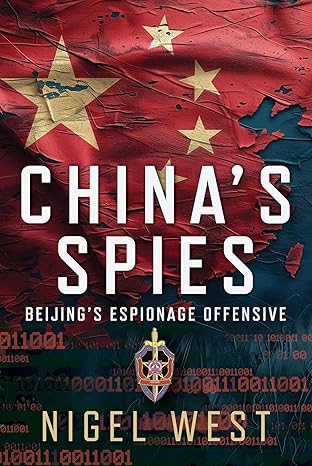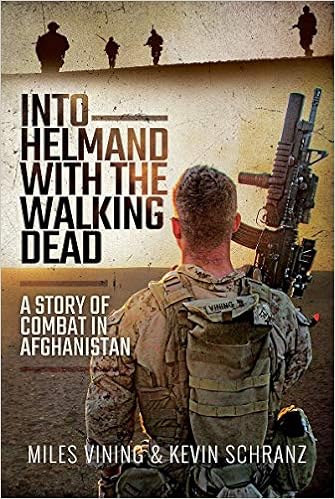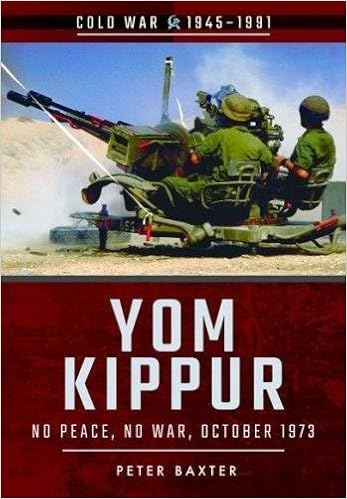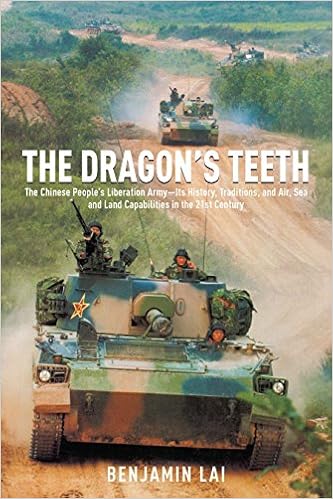Zbigniew Brzezinski - Patient Zero: Historical Underpinnings of the Ukraine Conflict
By LtCol Richard Beil USMC(Ret)
In the field of epidemiology, the term “patient zero” refers to the person identified as the first carrier of a communicable disease in an outbreak of related cases. The term can also be used in non-medical fields to describe the first individual affected by something negative that then propagated to others, such as the first user on a network infected by malware.
Although certainly not the first, or only, Cold Warrior who exhibited both a fear and hatred of Russia (then the Soviet Union), this paper will demonstrate that, following the collapse of the Soviet Union in 1991, the most strident anti-Russian voice in the U.S. foreign policy establishment was Jimmy Carter’s former National Security Advisor Zbigniew Brzezinski. It was Brzezinski’s voice, even louder than that of Henry Kissinger, which set the United States on the path to the current conflict in Ukraine.
Brzezinski predicted the escalation of the situation in Eastern Europe long before Putin took power. He posited that the problem with Russia was not just one man but rather a systemic feature of the Russian soul, inherently prone to expansionism, megalomania, and continual fear and insecurities because of the perpetual feeling of being encircled by enemies caused by post-Napoleonic and post-Second World War traumas and insecurities that are still very persistent in the nation’s literature and culture.
But, of equal importance was the neo-colonial nature of U.S. foreign policy since the overthrow of the Kingdom of Hawaii in 1893. Then came the Spanish-American War. With the exception of the Philippines and Puerto Rico, the U.S. never truly “colonized” any of the countries it came to dominate in the 20th century, at least not in the same way as the European powers had done in the 18th and 19th, completely taking over civil administration in the countries conquered. Instead, the U.S. used private businesses, backed by U.S. military force, to exploit the natural resources of the Third World in order to extract those resources while keeping those populations in poverty. A stark example of such U.S. practice was the “Banana Wars” of the early 2oth century, when the U.S. Marines were used to protect the assets of the United Fruit Company in Central America. Marine Major General Smedley Butler, who fought in those wars, summarized this American “neo-colonial” practice in his 1935 book “War Is a Racket”.
In relation to Ukraine, perhaps the greatest influence on Brzezinski’s mindset and geopolitical outlook was “The Heartland Theory” set forth by British geographer, Sir Halford John Mackinder, who wrote a paper in 1904 entitled "The Geographical Pivot of History." He postulated that that control of Eastern Europe was vital to control of the world. The "heartland" he referred to as the "pivot area" and as the core of Eurasia, and he considered all of Europe and Asia as the World Island.

The essence of the Heartland Theory is:
Who rules Eastern Europe commands the Heartland
Who rules the Heartland commands the World Island
Who rules the World Island commands the world.
Upon the collapse of the Soviet Union in 1991, liberal international relations theorists, and many Washington insiders, were in a celebratory mood. The United States would finally reap a “peace dividend”, allowing for more butter and fewer guns. Brzezinski saw the weakness of the Yeltsin administration not as an indicator that Russia would be permanently satisfied with a new role as geopolitical outsider committed to the voluntary constraint of its military during the collapse of its economy and the complete and utter evaporation of its national pride. To him, Russia was not a giant on rusted legs but a force to be reckoned with, as Moscow was just experiencing a temporary setback in the late 1990s that it would overcome within a few decades. According to Brzezinski, aggression and expansionism was buried deep in the Russian psyche. It is this view of Russia that has dominated the Western narrative ever since.
At the time he proposed his theory, Mackinder took into consideration world history only in the context of conflict between land and sea powers. Nations with large navies were at an advantage over those that could not successfully navigate the oceans. To many today, his theory is outdated, principally due to the advent of airpower which has greatly changed the ability to control territory and provide defensive capabilities.
However, in terms of global trade, aircraft are relatively useless in carrying bulk commodities. For a country like Russia, access to the world’s oceans is vital to its commercial viability. And, given its latitude, its only year-round, warm water access is via the Black Sea, the Bosphorus Strait, and the Dardanelles. If access to the Atlantic through either the Baltic or Black Seas is blocked or restricted, Russia can be economically strangled. This strangulation, in order to control Russia’s vast natural resources, has been the U.S. strategy, through NATO enlargement, since the 1990s.
Since the end of World War II, U.S. foreign policy has been based on duplicity and military action, or threat thereof. Since its creation by the National Security Act of 1947, the principal function of the CIA has been destabilization of countries the U.S. could then use to extract natural resources. In the present context, Ukraine’s vast natural resources were ripe for the taking IF the country could be incorporated into NATO and the EU. While there have been claims of “defending democracy” and Ukrainian sovereignty as the reasons for the conflict, South Carolina Senator Lindsey Graham said the quiet part out loud. During a visit to Kiev in September, Graham published a video standing next to Ukrainian leader Zelensky, in which the US senator said, “They’re sitting on a trillion dollars’ worth of minerals that could be good to our economy”.
But, how to get those resources? First, Ukraine’s government needed to be subverted and then overthrown because the Ukrainian Constitution specifically pledged the country to neutrality. Neutrality wouldn’t work. The U.S. must have at least titular control over the government in order to safeguard the private companies that would be going there to extract those resources. Once Ukraine was securely in the U.S. orbit, Russia could be goaded into attacking Ukraine to protect its eastern border.
Lest anyone think that this is simply “Putin Propaganda”, a 2019 paper published by the Rand Corporation laid out how the U.S. would use Ukraine as a “battering ram” to:
1) Weaken Russia economically through sanctions
2) Overthrow Vladimir Putin
3) “Balkanize” Russia, breaking the various republics of the Russian Federation into separate countries which could then be subverted.
Entitled “Extending Russia-Competing from Advantageous Ground”, This Rand study can be downloaded in PDF form at Extending Russia: Competing from Advantageous Ground | RAND. (https://www.rand.org/pubs/research_reports/RR3063.html)
In 2014, the plan was implemented by the CIA and western NGOs. A coup was staged overthrowing the government of Viktor Yanukovych. The U.S. then installed Petro Poroshenko, with many of the cabinet officials personally selected by Victoria Nuland, then Assistant Secretary of State for European and Eurasian Affairs.
What was unexpected by the coup plotters was that the Russian government was just as aware of the Heartland Theory as American foreign policy professionals. Recognizing the intent of the U.S. Navy to take over the Russian naval base at Sevastopol in the Crimea, thereby blocking Russian access to the open oceans, the Russians immediately annexed the Crimean Peninsula without a shot being fired. It is estimated that 50,000 Ukrainian troops removed their uniforms and went over to the Russian side during that event. The citizens of Crimea voted to remain with Russia in a referendum in 2014. Of course, the collective West continues to state that the referendum was fraudulently decided, despite there being no western observers on the ground at the time.
Ukraine’s original constitution had not only pledged the country’s neutrality in international geo-political affairs, but it had also recognized the rights of “cultural” Russians to continue using the Russian language, to educate their children in that language, and to follow their cultural traditions. Shortly after the new government was installed in Kyiv, these constitutional guarantees were cancelled.
The second unexpected result of the coup was that the Russian speaking peoples of the Donbass region in eastern Ukraine would revolt against a government they had not elected. This led to the formation of the Donetsk People's Republic, and Luhansk People's Republic and their revolt against the U.S. installed government in Kyiv. This, in turn, led to 8 years of civil war, with the Ukrainian Army shelling citizens that the Ukrainian government stated were their own.
Throughout this 8-year period, Russia declined to intervene militarily, despite repeated pleas from the Russian speakers in those eastern regions. They did, however, seek to bring an end to the fighting, negotiating and signing the Minsk II Agreement with Ukraine in 2015. This agreement, “guaranteed” by France and Germany, and ratified unanimously by the UN Security Council, called for a cease fire and withdrawal of all military forces. However, in a December 2022 interview, former German Chancellor Angela Merkel stated that Minsk II was intended to “buy time” for Ukraine to build up its armed forces in order to meet NATO standards before battling Russia.
However, perhaps the most serious issue involving NATO enlargement to Ukraine was that of stationing land-based Tomahawk missiles in Ukraine. The Mark 41 missile launch system, which fires the Tomahawk, has been used over 4,000 times since the early 1990s, principally in an offensive capacity in the first Gulf War, from Iraq and Syria to the former Yugoslavia.
The United States also uses the MK 41 in a defensive capacity—as launchers to shoot down incoming ballistic missiles in mid-flight. As of late 2021, The Pentagon had set up missile defense batteries, known as Aegis Ashore, on former Soviet turf in Romania and was in the process of doing the same in Poland. Given all the former broken promises and deceptions of the U.S., Russia fears the United States could covertly adapt the defensive batteries to fire Tomahawks into Moscow’s airspace.
Given the failure of the Minsk II Agreement and the continued Ukrainian attacks on the eastern oblasts, Russia began massing troops on its border with Ukraine. However, on 15 December 2021, Russian President Vladimir Putin submitted "specific proposals" on Russia's demands for security guarantees from the West to U.S. Assistant Secretary of State Karen Donfried. Entitled "Treaty between the United States of America and the Russian Federation on Security Guarantees", included the following:
· a requirement that both countries "not implement security measures … that could undermine core security interests of the other Party"
· a requirement that the United States undertake to prevent further NATO enlargement
· a ban on deployment of U.S. intermediate-range missiles in Europe
· limits on the ability of heavy bombers and surface warships to operate in and over international waters in range of the other side
· a requirement that both side's nuclear weapons only be deployed on national territory
In true Zbigniew Brzezinski fashion, Russia’s concerns for its own security were disregarded in Washington, which argued that Russia should not have a veto on the alliance's expansion and that NATO had the right to decide its own military posture.
In March 2022, one month after Russia launched its special military operation, Ukrainian President Vladimir Zelensky called for immediate negotiations to end the fighting. Representatives of Ukraine and Russia met in Istanbul and hammered out an agreement. Russia agreed to remove all its forces from eastern Ukraine and Ukraine would recognize the “autonomy” of the eastern, Russian speaking oblasts. Both Russian and Ukrainian participants have publicly stated that the agreement was initialed and simply needed the signatures of the respective presidents.
The next month, however, former British Prime Minister Boris Johnson flew to Kyvi and demanded that Ukraine NOT sign the agreement, but to “fight on”. What has been reported as the major sticking point and reason for declining the agreement was, again, the ultimate ability of NATO deployment of U.S. Tomahawk missiles in Ukraine, which would give Moscow less than 15 minutes warning time of a nuclear attack. In such a circumstance, the Kremlin would have no choice but to “launch on warning”, unleashing its nuclear arsenal before it could be destroyed in a first strike.
The ghost of Zbigniew Brzezinski is still with us today. His visceral hatred of the Russians conditioned two entire generations of neo-conservatives to distrust Russia, to only negotiate from a position of strength because of Russia’s supposed intention to recreate the Russian Empire.
But, it must be asked, about what has Russia lied? Is Russia bent on “expansion” as Brzezinski stated? If so, they could have marched into the Baltic states any time between their application to join NATO in 1999 and 2004, the date of their actually joining. Neither Latvia, Lithuania, nor Estonia has any army to speak of. The Russian could have annexed them at any time without any invoking of Article 5 of the NATO treaty. They could have attacked Ukraine any time during the 8-year civil war, as they were repeatedly asked to do by the Russian speaking people of the Donbass.
Upon dissolution of the Soviet Union, did Russia move west? No, it was the U.S. and NATO that moved east., following Brzezinski’s plan, put forth in his 1997 book “The Grand Chessboard”, to “encircle” Russia and extract its natural resources, bringing MacKinder’s “Heartland Theory” to fruition. Again, this is not Russian propaganda. This strategy is contained in American books and papers. There are people in Russia who can read English. They’ve been aware of this strategy the entire time.
Any true historian would objectively ask the question, “What would any national leader do if he believed his people and country were being threatened”? If Russia or China signed a pact with Mexico to place intermediate range missiles, capable of carrying nuclear warheads, along the Rio Grande, what would any U.S. president do? We had a brief glimpse in answer to the second question in 1963. John F. Kennedy committed an act of war by ordering a blockade of Cuba. Today, the U.S. is preparing to attack Mexico. The excuse is to dismantle the drug cartels. Under international law, any such attack will be viewed as an invasion.
The entire situation in Ukraine must be viewed through the historical lens of a 30+ year strategy, laid out by Zbigniew Brzezinski, to surround Russia, destroy it economically, break it into smaller pieces, and extract its natural resources. Regardless of what one thinks of the leader of any other country, it should be recognized that that leader has his own obligation to protect his nation.
| * * * |
© 2025 By LtCol Richard Beil USMC(Ret)
Written by LtCol Richard Beil USMC (Ret.).
About the author:
LtCol Rich Beil served 30 years in the Marine Corps, as an enlisted Infantryman and as an Artillery officer. Following his retirement, he obtained a Masters degree and taught American History for Ranger and Central Texas Colleges. He is a member of the International Society for the Scholarship of Teaching and Learning in History.
* Views expressed by contributors are their own and do not necessarily represent those of MilitaryHistoryOnline.com.







